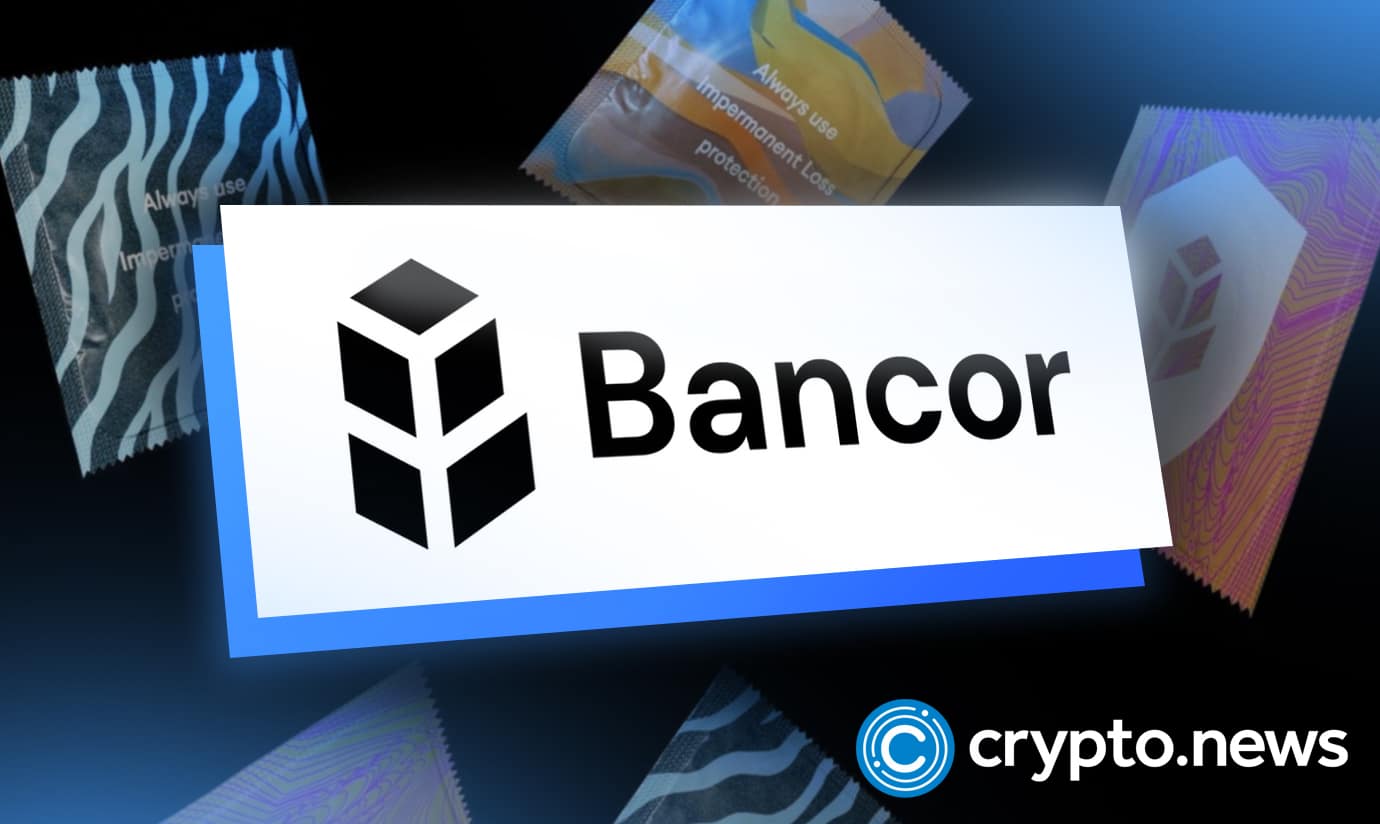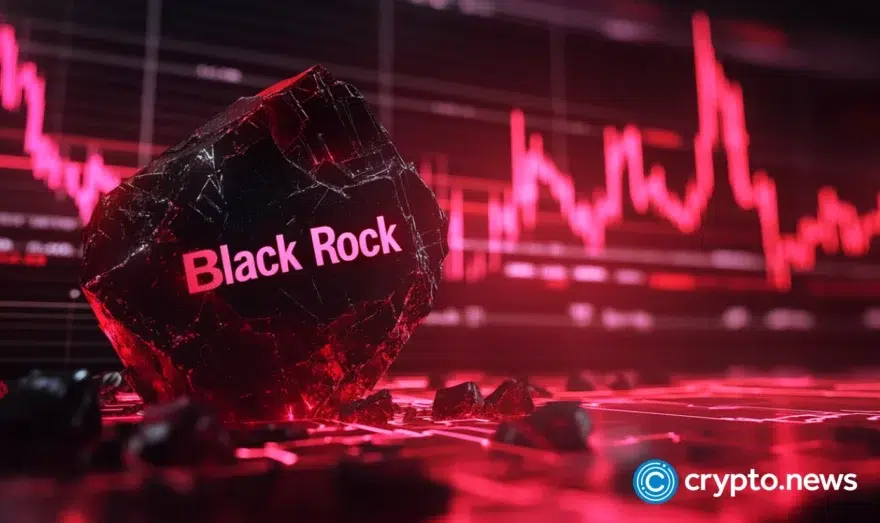Bancor Network (BNT) – What Is It, and How Does It Work?

Bancor Network is a decentralized crypto exchange launched in Switzerland in 2016 to allow for the conversion of crypto assets without intermediaries. The exchange; primarily focuses on the DeFi sector by allowing easy integration with Dapps and converting even the least known tokens.
The protocol has made a name for itself in the crypto space due to its interest in the DeFi sector but has also battled several downs like legal challenges and widely publicized hacks. However, it is not backing down anytime soon as it aims to incentivize crypto enthusiasts to keep locking their assets in pools for passive earning of rewards.
The exchange is decentralized and uses an Automated Market Maker (AMM) to facilitate the trading of crypto assets. An AMM is a smart contract common in most crypto DEXs in the DeFi sector since it does not require a central organization to manage its finances. The exchange aims to make crypto assets more liquid by offering incentives to the investors to create and maintain liquidity pools that power the sector.
The exchange works similarly to most DeFi AMMs and exchanges like Uniswap, Sushiswap, and Balancer. Whenever a trade is made on the platform, the tokens are converted to BNT for transactions. The trade then pays gas fees to generate rewards for the liquidity providers (LPs) who locked their BNT tokens on the exchange.
The BNT token also serves as the governance token in the ecosystem. Below is more information on Bancor and its BNT token.
Company Overview
Bancor is one of the pioneers of the DeFi sector. It was launched in 2017 when most crypto services providers were centralized and offered more limited ranges of assets for trading. Guy and Galia Benartzi founded the exchange.
The exchange was built through funds collected from a token sale managed by a Swiss non-profit organization, B protocol Foundation. It raised $153 M in the funding round with nearly 11K investors. At the time, that sale was the largest of its kind. The exchange gave half of the tokens to the sale participants and the other one to the founding team to manage the platform.
The platform came to light well in 2020 (the DeFi year) as the DeFi sector rose through the dark to the forefront of the crypto sector. The exchange now has a newer version Bancor V2 optimized to earn more profits for traders who choose to lock their tokens on the platform (provide liquidity).
The BNT Token
The BNT token is essential in the exchange as it serves as both the governance and the utility token. It facilitates the trading of assets between pools on the exchange. Its supply is also low, making it an excellent asset to hedge against inflation. It can only have 69 million tokens in circulation.
The coin is also listed on other exchanges away from Bancor. Since it runs on Ethereum and EOS, it can also be compatible with any available liquidity pool powered by either of the two networks. It also gains value from its role in tracking the usage of the Bancor platform.
BNT Price Prediction
BNT trades at $2.17 and ranks as number 111 on CoinMarketCap in its market capitalization. The coin has a 24-hour trading volume of slightly over $28M with a TVL (Total Value Locked) of $ 967, 134, 344. Its market capitalization is worth $573,684,797. This data shows that the coin has a commanding market performance and stands as one of the best cryptos globally.
The coin is the utility token of the Bancor ecosystem, which gives it a real-life use case and has an active burning mechanism through the new vortex system. This burning mechanism ensures that the supply of the coins remains limited.
The coin has the potential to increase in value over the next few years, parallel to the platform’s growth in usage. However, it is best to be cautious about it as it can also lose value depending on what the market will be like in the future. Therefore it is best to DYOR before investing in this or any other crypto project.
Bancor key features
Cross-chain conversion
Bancor network allows for the exchange of tokens across different blockchain networks. The exchange supports cross-chain conversion between Ethereum and EOS but plans to incorporate other bridges over time.
Automatic liquidity
The exchange brings an automatic decentralization to any token in the crypto space. The exchange can allow even the privately created tokens to get instant and automatic liquidity anytime, no matter their trading volumes. This feature is great and very special in promoting the adoption of Dapps and the DeFi sector.
Bancor staking
Bancor allows users to stake their BNT holdings, which adds liquidity to the protocol. The users then receive rewards upon staking their coins in the existing liquidity pools. The amount of the BNT minted for rewarding the users is accepted through a consensus in the BancorDAO.
Single asset pooling
Bancor’s liquidity pools allow users to pool only one asset in their liquidity pools. This mechanism is better than most exchanges since a liquidity provider cannot incurr impermanent loss.
How Does Bancor Work?
Bancor incentivizes its users to add liquidity to its pools to allow for the smooth functioning of its AMM. Each pool comprises a pair of crypto assets and a reserve of BNT tokens. After users deposit their assets in a given pool, they receive a new token. The new token is a pool token and can retrieve the original amount of the locked assets after a locking cycle.
BNT tokens serve as an intermediary currency during the conversion of assets between the exchange and the pools. Notably, the exchange requires a user to lock only one asset in the pool as opposed to most of its competitors like Uniswap, which requires a user to lock a pair of assets.
For instance, in a pool that consists of ETH and DAI on Bancor, a user could only deposit either of the two assets but not both. But on Uniswap, they must deposit the two assets at a value rate of 1:1 and rebalance throughout the locking cycle. This structure is advantageous since users can not suffer from impermanent loss (IL).
Bancor v2 claims to have solved the issue of ensuring that liquidity providers (LPs) retrieve the correct value of their assets through an “Oracle” solution. This solution relays data on prices from an external source to the existing systems.
It also allows Bancor’s pools to adjust the proportion of the tokens relative to the live market prices allowing liquidity providers to withdraw the same value of tokens they deposited.
According to Bancor, their v3 “proposes a new protocol version that reduces costs for trading and makes it refreshingly easy for users to earn on their favorite tokens.”
The v3 also has instant protection where users no longer need to wait for 100 days for 100% IL protection. It also has an auto-compounding reward system where users no longer need to unstake and restake after a staking cycle, which costs extra gas fees.
Bancor Liquidity Mining
Bancor allows for the staking of one asset in the liquidity pools that support two assets each. Below are some buttons on Bancor.network Portfolio page and what they mean:
- “Initial Stake” is the total number of tokens that were initially staked
- “Protected” is the value of a users position if it has achieved a 100% protection
- “Claimable” is the value of tokens that can be withdrawn once their locking cycles are complete.
Adding liquidity to the platform is also similar to other exchanges. Here is the exact procedure that the platform has provided for its users:
- Go to app.bancor.network
- Connect your wallet:
- Find a pool and click the “+” button to add liquidity:
- REWARDS column: APR from BNT rewards (paid in BNT)
- APR column: APR from swap fees (paid in LINK)
- Select the single token you’d like to stake and the amount to stake:
- After confirming the transaction, you’ll be redirected to your Portfolio on bancor.network, where you can track each stake and the cumulative fees and rewards you’re earning:
Is It Safe to Trade On Bancor?
Bancor is one of the least risky platforms to lock your funds in for liquidity. The exchange allows safe staking of only one asset; thus, the occurrence of an impermanent loss from its liquidity pools is impossible. It also has security measures for its users. However, it has not been easy for the exchange to maintain the tight security of its operations.
The exchange had suffered a loss of about $13.5 M from the theft of digital assets in 2018. Reports said that the exchange lost the funds from a security breach that claimed $12.5m worth of ETH and $1M from a crypto wallet. However, the exchange claimed that no user funds were compromised.
In 2021, the exchange was battling a legal case where some users had sued it for offering unregistered securities worth $216M. However, a New York judge tossed away the issue, saying that the exchange was not in the wrong as the plaintiff did not offer more evidence on the matter.
Despite these controversies, the platform has reinforced its security through putting some measures like audits. However, it is advisable to follow the crypto space’s general security measures and the ones directed by the exchange to ensure that the platform remains secure while using it.
How Does Bancor Compare to Its Competitors?
Due to its highly innovative structure, Bancor compares well to its competitors. Here is how it compares to Uniswap, one of the best crypto DEXs in the DeFi sector;
- Bancor does better than Uniswap in terms of active customer support services. It has live support services, while Uniswap does not have any.
- Bancor allows for the staking of only one asset in its liquidity pools, making it more profitable to its LPs since they cannot incur an impermanent loss. This feature is a cut above Uniswap, whose two-sided liquidity pools mean that a user must provide liquidity by depositing two assets into the platform.
- Uniswap trading platforms are more versatile as it supports different applications, including mobile and web, while Bancor only supports web.
- Uniswap has an advantage over Bancor due to its extensive liquidity. As a result, trades on Uniswap are less likely to incur slippage than on Bancor.
Final word
Bancor is one of the many alternatives to cryptoDEXs in the DeFi sector. Its main score is dealing with impermanent loss experienced in the liquidity mining of different crypto projects. This feature stands out against most available exchanges, including Binance and Uniswap. As a result, Bancor is one of the best protocols to lock assets for liquidity mining.
This platform has introduced its v3, which now offers IL protection at an instant rate. The previous v2 offered a whole/ 100% IL protection after 100 days which was still better than most exchanges that do not offer any protection. Its newer version, the v3, also has other upticks like auto compounding of restaking rewards to avoid extra gas fees.
These developments show that the exchange is encouraging its users to participate in exploring methods of earning passively in the crypto space and supporting DeFi through the adding of liquidity. As a result, the exchange might continue growing in daily usage and transactional volumes. Such growth might be followed by a surge in its utility and governance token, the BNT token.
The efforts of this exchange to encourage users to lock their assets in the exchange to provide liquidity should incentivize the crypto community to explore means of earning passively. These means include liquidity mining, staking, yield farming, and many more like high breeds of these options.
However, it is advisable to look into several platforms that allow users to earn passively before settling for any. Also, a user should be keen to avoid obvious scam traps and projects that could lead to huge losses.














